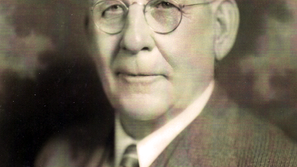Opinion: Alaska — an ice place to visit
- Tom Elias
- Sep 4, 2019
- 5 min read

Courtesy of Tom Elias
The Nenana River flows beside gravelly Denali Highway from its glacial sources, as seen from a Denali Jeep Excursion in Alaska.
SEWARD, Alaska — A two-week trip to some of this vast state’s major population centers and some smaller towns, too, revealed the truth of the message on t-shirts commonly sold here – “Untamed.”
At times in this fantastically scenic, rough-and-ready state, a visitor feels like the Wild West is still alive.
Sitting in the Starbucks coffee shop section of an IGA grocery just outside the charming little town of Talkeetna, only 100 miles north of Anchorage, Alaska’s largest city, yielded one illustrative vignette:
At the next table, a young man flirted with an attractive young woman. It seemed ordinary until a glance down revealed a holstered .45 caliber pistol hanging from the boy’s belt.
Or take a hike beside a river near Denali National Park and you might notice a sign hanging from a buoy: “No shooting in the water.”
This raw quality has survived more than 160 years of Alaska being American territory and 60 as a full-fledged state, one that produced onetime vice presidential candidate Sarah Palin, who seems a natural product of the society she grew up in.
“We are few people in a vast, beautifully dangerous land,” said a letter to the editor of a newspaper.
More and more residents of the Lower 48 states appear eager to see this place, enough to make tourism a $2 billion industry here, second only to petroleum in its economic impact.
There are myriad opportunities for visitors to see this almost measureless land, more than three times larger than California, with a coastline four times longer than the Golden State’s — and a population of barely 700,000.
Single-engine float planes take off every minute or two from Lake Hood, beside the Anchorage airport and just outside the coffee shop of the Lakefront Anchorage Hotel. They’re headed for tours of the 20,320-foot Denali mountain, formerly known as Mt. McKinley, North America’s highest peak. They’re also taking fly fishermen to lodges alongside lakes deep in the Alaskan interior.
Almost every significant town offers helicopter tours of wild coastal lands and huge mountains including the four 16,000-foot-plus peaks in Wrangell-St. Elias National Park. Some choppers and planes land atop glaciers, which have receded by many miles, but still offer smooth landing areas and walkable surfaces.
You can also land on the slopes of 18,008-foot Mt. St. Elias and many other sharp peaks. But for some, staying on the surface of land and sea offers the most satisfaction — and far lower costs than air tours, which can cost upwards of $800 per hour per person.
Here are a few attractions for those folks:
The Glacier boat tour on Prince William Sound southeast of Anchorage. For $159 for adults ($80 for children), Phillips Tours will pick you up at any of three Anchorage hotels for an 11-hour adventure where you’ll not only see glaciers calving tons of ice into the sea every hour or two, but can also take note of clear marks on nearby cliffs showing how far those glaciers reached less than a century ago.
The six-hour catamaran ride is so smooth Phillips offers a “no seasickness” guarantee and captains of its ships like the Klondike Explorer and the Bravest actively seek out and stop near wildlife. We saw humpback whales, harbor seals, sea otters, sea lions, moose and bald eagles and their huge nests.
A national forest ranger providing commentary on board pointed out the effects of global warming, including evidence that some glaciers have receded more than two miles in just the last two years.
He wasn’t shy about discussing this, even though he technically works for President Trump, the nation’s leading climate change denier. “No one is muzzling us,” said the ranger. Still, his name is not given here to protect him from potential repercussions.
There are also no muzzles on the predominantly female corps of ship captains giving commentary aboard the several ships operated by Major Marine Cruises from Seward, about 120 miles south of Anchorage. These depart from behind the waterfront Harbor 360 hotel. Major Marine runs tours of up to 8 1/2 hours, priced from $89 for a 3 ½-hour wildlife jaunt to $224 for its longest trip, which features three active tidewater glaciers calving into the remote Northwestern Fjord. This one is billed as the company’s best option for wildlife photography.
The shortest tour, down Resurrection Bay and into the Gulf of Alaska, also offers myriad glacier views and plenty of wildlife, from puffins to huge fin whales, the second-largest creatures on earth.
On foot: If you’re visiting Seward, where snowcapped peaks are visible year-‘round just across the
700-foot-deep Resurrection Bay, you can also see a glacier up close and personal, and free, even in the 85-degree weather we encountered.
This is the Exit Glacier, protruding down from the 700-square-mile Harding Icefield into Kenai Fjords National Park just 12 miles northwest of town.
The approach road features year signs showing how far the Exit Glacier extended in 1899, 1901, 1920, 1959 and more recent years. Some signs pop up along the two-mile Glacier Overlook loop trail that starts at a small visitor center where park rangers were not collecting fees when we arrived.
Anyone who likes driving to remote areas will likely appreciate Denali Jeep Excursions along the gravel Denali Highway just south of the national park, about 250 miles north of Anchorage. Most car rental contracts in Alaska forbid driving unpaved roads. The park itself has only one road, paved for just 14 miles into its tundra interior.
So driving more than 100 miles in a Jeep caravan to areas frequented by moose, grizzly bears, beavers and much more wildlife can be fun. For $169 per adult, Denali Jeep Excursions will pick you up at major area hotels like the Denali Princess and the Grand Denali Lodge and deliver you to a jeep compound 18 miles south of the park, near Cantwell, a hamlet of just a few buildings.
Two-way CB radios link Jeeps on the caravan as the tour leader spots animals and delivers folksy commentary in a strong Alabama accent. You see the glacial sources of the Nenana River, a major Yukon River tributary that flows just outside Denali National Park, and you might even glimpse Denali itself on a clear day — only about 30 percent of visitors actually see the mountain.
But you will for sure see trumpeter swans on a lake created by a beaver lodge and from the guides you’ll hear unforgettable phrases like, “men, please use the facili-trees,” just before a brief pit stop.
It also can be easy and feel more authentic to avoid chain hotels in Alaska, even though there are Hiltons and a Sheraton in Anchorage and Best Westerns in several places.
For one example, near Denali National Park there’s the Denali Lakeview Inn, a modern structure where almost all rooms overlook Otto Lake and several 5,000-foot Alaska Range mountains behind it. For about $230, you’ll get personal service, plus a large breakfast stowed in the refrigerator of each room, to be enjoyed whenever you like.
Seward’s Harbor 360 offers large, modern rooms right on the waterfront for $314 per king-bedded accommodation with breakfast. This hotel features a year-round indoor swimming pool and hot tub.
At Talkeetna, the log-cabin-style Susnitsa River Lodge offers large rooms and cabins for about $199, with the river of the same name flowing rapidly past beneath your veranda. We got our best views of Denali (and some of our best meals) in this small town 45 miles from the southern base of the former Mt. McKinley.
Add it up and there are plenty of highly-civilized ways to see America’s last frontier by land and sea, even if you don’t like small planes and helicopters. Or add in a chopper or plane ride, too. But always be aware that most of Alaska looks and feels much as it did when the English explorer Captain James Cook landed at what is now Anchorage in 1778.
• • •
Thomas Elias writes the California Focus syndicated column appearing in more than 90 California newspapers, including The Madera Tribune.


























Comments